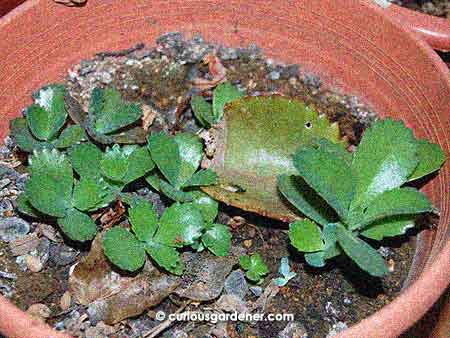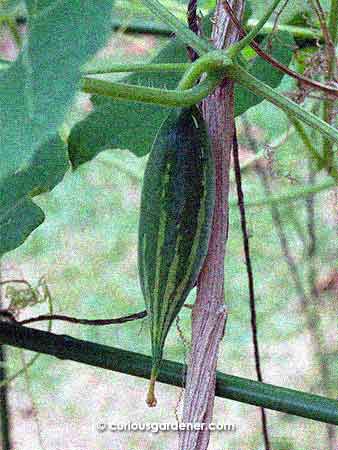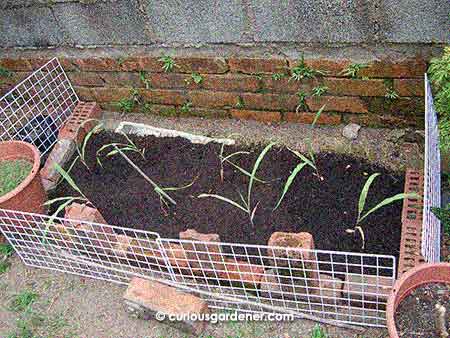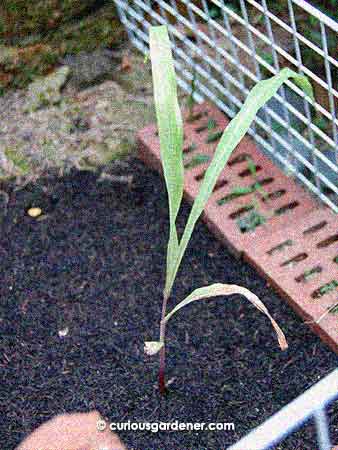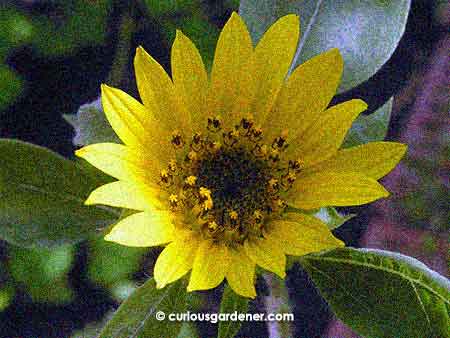
This was one of my last lot of stunted sunflowers. Thankfully, sunflowers remain pretty, no matter what size they are.
There are times when I procrastinate, and there are times I’m quick to take action. In the case of scratching my itch for sunflowers, I’m glad to say I didn’t wait around.
First of all, Novice Gardener came to my rescue with a few varieties of sunflowers. Of those, I managed to germinate a few varieties – at my first report two weeks ago, the Moonwalker, Italian White and Velvet Queen seeds had sprung into action. Subsequent to that, a couple of Valentine (pale lemon yellow with dark brown centres) and Mexican sunflowers/Tithonias began to grow.
The weather has been quite rainy, so I’ve kept the plants in pots and tried to put them in bright areas to grow well. I well remember growing my first few sunflower plants and happily planting them out despite rainy weather. Firstly, the rain pelted some of the young plants to death. Then, there were the snails, beetles and caterpillars that found the sunflower plants irresistibly delectable.
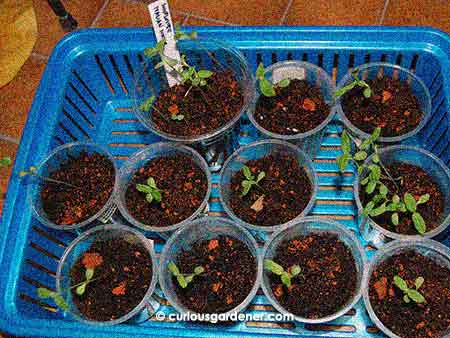
I call this my Italian White factory – every time I thought all the seeds had finished sprouting, more would germinate…
Yes, there are many hazards awaiting sunflower plants, young and old. My humongous Early Russian sunflower plant had been growing very well until my foes, the hairy caterpillars, hatched en masse on several leaves, and stunted the plant’s growth by decimating a few large, important leaves.
With all these obstacles, I almost wonder why I’m considering growing these plants again…
…but then I start looking at seed catalogues and all logic goes out the window…

It almost makes my mouth water in anticipation when I look at all these sunflower seeds. Interestingly enough, a few of the smaller seeds belong to bigger plants!
So, I haven’t put off my yearning for more sunflowers, because I have this grand idea that I’d like to have sunflowers blooming in the garden in time for the festive season at the end of the year. Whether I can achieve this or not remains to be seen, but I’ve got a good selection of sunflowers to grow – and this time I went for a nice range of colour combinations, as well as plant heights.
Besides the plants grown from Novice Gardener’s seeds, I’ve finally got new sprouts of the Giant Sungold, which is a little chrysanthemum-like in appearance, and the Giganteus and Mongolian Giant – both, supposedly huge and single-headed sunflower plants.
I am determined to make the best of the fresh seeds by planting them sooner, and to store them properly by keeping them in the fridge. From what I can determine, Novice Gardener and I bought seeds around the same time 2 years ago (I think) and my seeds stopped being viable while many of hers still have life in them because she had kept them in the fridge.
I didn’t believe that this would have had any bearing on the seeds, so when I sowed the seeds from her, I literally tossed a small handful of each to be germinated. Well, the giant ones didn’t respond, but a few of the others, especially the Italian Whites, grew with a vengeance. I have so many of these latter ones that I may follow the advice from the seed distributor’s site to plant them all in a row to get a hedge-like look…
In the meantime, there’s soil to amend, seeds to sow and seedlings to plant out soon. Yes, I still have my sunflower dream to fulfill.
© 2012 curiousgardener.com All rights reserved.



